Many of us fell in love with a fluffy flower, which blooms in the end of spring. This flower is peony. Currently, there are many types of peonies, but it is herbal peonies that are the most enduring.
Herbal Peonies People began to grow a few centuries ago. Every year, this flower won the hearts of many people. Its popularity is not lost and now, and all because this garden plant blooms very beautifully and during flowering the pleasant aroma swell. If you choose and put on your site several varieties of this plant, then you can admire the flowering of peonies for the whole summer.
Gardeners and flowerflowers have their own secrets of growing herbaceous peonies. These flowers are unpretentious, they do not require much care, but some conditions will still have to observe. In general, if you adhere to simple rules, in one place the Peony can "live" for a whole 50 years! The only signal to the transplant is when the plant ceases to bloom. But then you have to work a little to work out to correctly divide the peony. It is not easy and if the tricks are a long-term peonies, then you need to comply with all the recommendations of professionals to perform the correct transplant.
Pion grassy. Description
In nature, there are more than 40 types of peonies. North America is considered to be the birthplace of these beautiful plants. Peonies feel well in the subtropical belt, but also in our latitudes also adapt to the change of weather conditions and please us with their flowering.
The varieties of this plant there are several:
- shaky;
- grassy;
- crossed (with the properties of grassy and tree).
Now, in the middle lane of Russia, people are successfully growing herbaceous peony. Plants grow up to a meter in height, roots at peonies, as if cones, very powerful and strong, rhizome is also strong. Skes can be several, the leaves are painted in different shades of greenery (from light to dark). In nature, there are grassy peonies with dark purple leaves, they are located on the stems alternately.
Flowers are large and single, and also - incredibly fragrant. The diameter of one flower during flowering period reaches up to 20 cm. Beautifully look at the blossomed peonies, both in the cut and on the bush itself.
Pion grassy. Photo:
Peonies in care and cultivation are unpretentious. There are no particular difficulties in cultivation, so this plant variety is very popular among amateur gardeners. You can put the bushes of peonies once, and then for several decades, rejoice in the flowering of these unique colors.
The breeders have another interest: by crossing unpretentious species, they have achieved that there are currently more than 5,000 sorts of peonies that have been derived over the past decades.
Each variety of peony differs from each other not only by the color, but also the size of the buds, the timing of flowering, the height of the bush itself and its outlines.
Pion grazing varieties
Let's get acquainted with the varieties, they are accepted for such groups:
- Peonies "not terry" - differ in that the petals are line up in 1-2 rows. Flowers are large, and in the center there are stamens (a lot of them). The leaves may be ordinary or "corrugation" (this is the "Golden Nou" variety).
- Flowers "semi-" - this type of peonies are lightweight and large, stamens are located not only in the center of the flower, but also can hide between petals. Petals are built up in 7 rows. Popular grade: "Miss America" \u200b\u200b- the early grade, is distinguished by the fact that the stamens are very bright, yellow.
- Peonies "Japanese" - stamens are collected in the center of the flower in the form of "Pompon". Petals can be located in several rows or one. Very beautiful peonies of the variety "Caolet" dark burgundy painting with large flowers.
- Mixed or anemoid variety was obtained as a result of crossing Japanese peonies with terry. It turned out an interesting variety of peonies with wide bottom petals, which are located in 1-2 rows and shorter and rounded small petals, adorning the remaining flower space. Popular varieties of "Rhapsodia", dentition-pink flowers, large on the edge and cream with light yellow - centered; "Mountain" - early sorts of peonies, flowers are large (up to 17 cm in diameter), color - gentle cream.
- Single terry, diamond or "hemisphans" - the petals of this variety of peonies are collected in the hemisphere, and when disclosure form a neat ball. The best grade: "Jules Erie" - flourishing very early, pleases the flowers of the pink-lilac shade, the diameter of the colors is up to 16 cm.
- Character in the form of a crown and hemisphere - flowers in such peonies are located in 3 tiers from the bottom of the flower, and the ring from the semicircular petals are formulated from above. The lower rows of the same color, the upper - may differ slightly (for a couple of tones lighter or darker). The peach shade of buds (the "Nancy" variety) flourished early, the diameter of the discontinued buds is 17 cm.
- Petals, built in the form of roses - remotely this variety of plants resembles a rose. Petals rounded shape, almost the same size, very large and wide. Late variety "Salnges" is distinguished by the fact that the stems are very heavy, they need additional support or support. Petals - gentle cream shade. Very beautiful variety of pions "Boxing" - Buds are large, scarlet. There are also polisozoids with stamens in the center.
Pion grassy. Landing
The cultivation of peonies is not a challenge. The main thing is to choose a landing area to no longer reset these plants with place in place. It is very important because the root system of peonies is very strong and powerful. Roots deepen to the ground up to 1 m, so an adult bush (from 5 years old) to transplant is very difficult.
To land a grassy peony, you need to choose well lit and sunny. It is desirable that the Sun warms up this site for 5 hours (first half of the day). Well, if the shrubs and low trees will grow nearby, so that the plants are protected. It is undesirable to plant peonies in the lowland, so that the rhizomes do not start.
Soil is suitable for loam, acidity is 6.6 pH. Clammable soils are not suitable, it is necessary before boarding such a soil and make a mixture of peat, humid and sand.
If the soil is sandy, then it is also necessary to add a nutrient mixture consisting of clay, humid and peat. If the soil is peat, then organic fertilizers, sand and wood ash need to be made.
Planting in the autumn period
The best time to transplant or landing young plants is the end of August. A week before putting peonies, you need to prepare a place. To do this, they dig a hole (dimensions 60, 60 by 60 cm), the distance between the holes is 10 cm.
At the bottom of each prepared pit it is necessary to put drainage from large sand or small rubble. After - to lay a layer of nutrient mixture: it is humid, compost, superphosphate (200 g), lime (100 g), wood ash (300 g) and potassium sulfate (100 g). Components need to mix and add to each pit, put a tight - layer of up to 30 cm. Each pit need to fill the land (remaining space) and leave for a week.
After 7 days, the soil will see a little bit and then you can plant a peony along with the root and slightly tamper the earth.
Remember that it is not necessary too deepening peonies, since this plant does not tolerate a strong blowout. Otherwise, the plant will not perish, but lush flowering can be waited for a very long time.
And also, in the first year after landing, peonies do not bloom, moreover, they look like those who have led, and this is normal - they have not reached the stage of maturity. And when the bush rises, it means that it is possible to expect flowering soon.
Planting peonies in spring time
According to experienced gardeners, the planting of the peony of grassy spring is better not to exercise, as this is not the most favorable time. But there are cases when there is an excellent seating material that needs to be planted. Then it is worth picking up a small vase (up to 3 liters) and put the peonies into it, and until it is possible to plant a plant in an open ground, it is worth holding peonies in the basement where it is humor and dark.
Support the soil in such a state (high humidity) will have to be regularly. It is possible to lay ice or simply water with chilled water.
As soon as heptites (the end of April is the beginning of May), peonies can be taken out on the site and bury into the ground along with the pot. Before autumn, the plant is better not to touch, and then it is allowed to transplant it to the pit (prepared in advance). It is necessary to carefully translate the peony from the pot together with the ground and put in the ground.
When you can transplant peonies
In the wild, peonies grow in one place without transplanting up to 50 years and even more. But since many varieties are derived by crossing, then in one place they can be up to 10 years. Then there will be a bush to transplant, but at first it needs to be divided.
The division is one of the simplest ways of breeding peonies. For this, bushes are suitable, age from 5 years, which bloomed several times. With this procedure, it is better not to delay, because the root system is growing over the years and then it is more difficult to carry out a transplant. Therefore, for the transplantation of peonies, the optimal interval - every 3-4 years. Pereona grassy flowers should be replant in autumn, preferably in September.
Transfer Rules:
- in early September, the bush should be inked;
- then very carefully "move" to the pool and remove the bush from the ground;
- it is necessary to clean the rhizome and rinse under the jet of water (pressure is weak);
- ground part of the plant cut down until the root start;
- after the rhizer is washed, it must be left on the site so that the glasses are excessive liquid, and the roots are slightly led. This is necessary to achieve the elasticity of the roots, so that they are not damaged during transplantation;
- thick and old roots are desirable to trim (15 cm). Circular angle - 45 o;
- before boarding, you need to learn the root, then you can share;
- delivery is not easy task. The easiest way to insert in the middle of the clins (with the help of a hammer) and split the rhizome to the parts;
- it is possible that inside the old root you will find the emptiness. It is necessary to clean such sites to clean and treat by manganese solution. Sections process fungicide;
- each separated plant should consist of an root neck (3-4 peak) and roots. Therefore, try to share the rhizome equal to the plants do not died.
How to transplant peonies grassy and tree? This is done in the same way as when planting plants. First, the soil mulching hole is prepared (peat layer - 7 cm). You can remove the mulch layer only with the onset of spring when the first sprouts will appear.
After transplanting, the peonies immediately increase the powerful root system. Flowering during this period do not wait. You can help peonies and pinch up small boutons in the first year, and next year, leave 1 bouton on the bush. After disclosing it is better to cut and carefully examine on the correspondence of the variety. If you doubt, then next year it is desirable to remove all buds and leave only one. Only on the 3rd, and then the 5th year after the transplantation, good, large buds will appear.
How do peonies multiply?
These plants have several reproduction options, the first and basic - this by dividing an adult bush.
There are 2 more breeding methods:
- with the help of seeds;
- reproduction with cuttings.
Plants breed and seed, these seeds are not always qualitative. They are more valuable for breeders. And for amateur gardeners, such a method of cultivation of peonies is too long, because first blooms will have to wait for as many as 5 years.
If you really want to try to grow peonies from seeds, they must be collected and immediately sowed (at the end of August). By the spring they should germinate.
Reproduction with cuttings - you need to cut off the rhizome with the kidney and plant (in the middle of summer). In September, the cuttings are rooted. This method of breeding is not fast, the first bloom is waiting for no earlier than after 4 years.
Yellow herbaceous peony:
Pion grassy. Care
How to care for peonies at different times of the year:
- Autumn - it's time to land and transplantation. Landing can be carried out, but not every year. If this year you did not plan to transplant peonies, then adult plants need to prepare for winter: remove dry leaves, trim the courageous stems. All this must be burned, so we get rid of bacteria and viruses that may be present in the leaves. The remaining part of the plant needs to treat ash (300 pcs. For each bush). In the fall, with the arrival of the first frosts, peonies need to trim. The stalks are cut not low to break with 3 leaves above the ground.
- With the onset of spring, watering peonies should be abundantly, but not often. Under each bush, you need to make 3 buckets so that the soil is properly moistened. Early spring plants strongly need moisture, and then this period of bootonization and abundant flowering. When watering, try to explode the soil, remove the weed grass. Watering plants, make sure that the leaves remain dry, and the whole moisture was getting rhizomet.
- In summer, the care of peonies is minimized - after flowering buds, peonies need to water, loosen the soil, glow from weeding grass and make feeding.
And some information about the introduction of nutrient mixtures: in the spring the soil you need to pour a solution of manganese (10 liters 3 g), this mixture is enough for 2 bushes.
In the period of active growth of shoots, it is desirable to feed the plant with a solution of ammonium nitrate (on the water bucket - 15 g).
From mid-May and until the end of August, plants need fake with mineral fertilizers. The best period for making a nutrient mixture is evening. Make 1 time per month.
After 2 weeks from the moment the peonies are swinging, it is necessary to feed the plants with such a mixture: water - 10 l, the potash salt - 5 g, superphosphates - 10 g. The alternation of organic fertilizers with minerals is allowed.
What to do when peonies beat away?
Peonies are flowing at the end of spring, some types of plants - at the beginning of summer. As soon as the buds fully open and start fading, all the flowers need to be removed. After 3 weeks it is necessary to make feeding (potash or phosphoric fertilizers). Watering is regular.
At the end of August, it is worth strengthening watering, because during this period the kidney laying and the plant will need more moisture.
Preparation of plants to wintering is also necessary. Watering should be reduced if the peonies stems are slowly yellow, and with the onset of frosts it is necessary to remove the entire aboveground part of the plant (pruning to the ground level).
For the period of wintering, young plants are better to cover, and the old people will move well.
Peony diseases
Most of all peonies are afraid of the disease "gray rot". In mid-May, seven mold sites may appear on the stems. This disease is developing due to the oversight of nitrogen in the soil, if the weather has been rainy or if the bushes are planted too close to each other.
It is necessary to fight this disease like this: we cut and burn spoiled areas, spray plants with copper vitrios (on the water bucket 50 g). You can do otherwise and prepare garlic water - by 1 liter of water, add 10 g of chopped garlic. Spray not only plants, but also soil.
Occasionally, peonies are infected with "torment dew" - this is a fungus that amazes the leaves of the plant. They are covered by a whitish touch: control measures are as follows: spraying with soap solution with the addition of vitriol (on the water bucket 20 g of copper mood and a piece of economic soap).

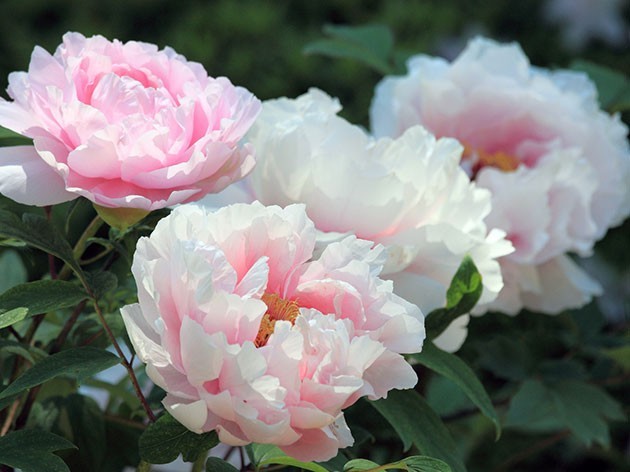
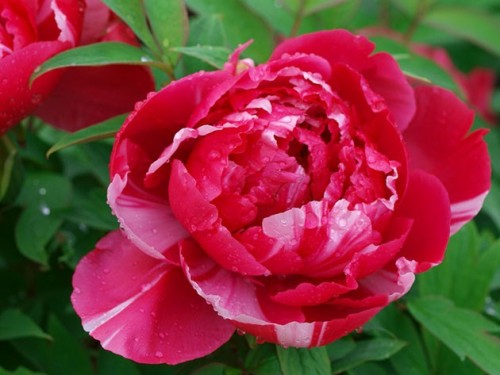
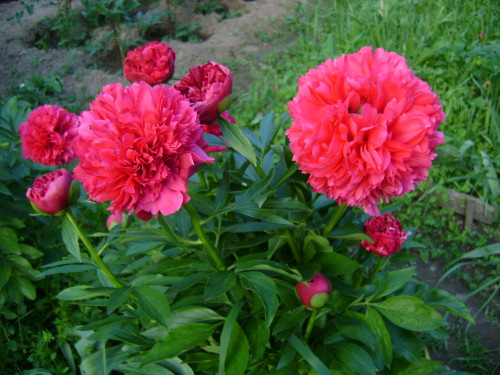
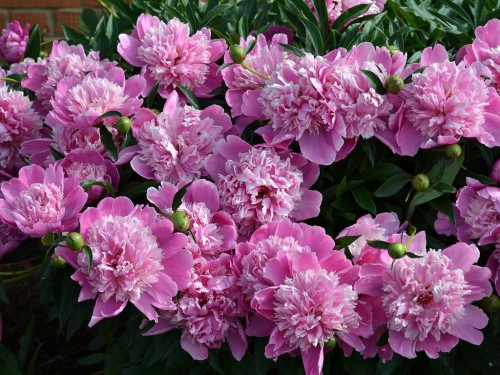
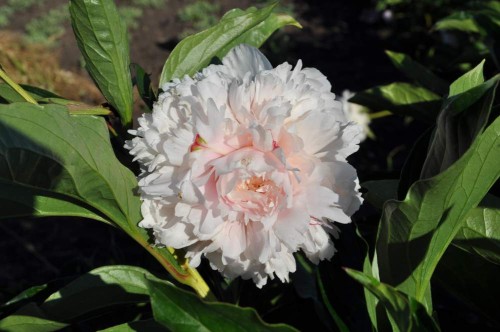
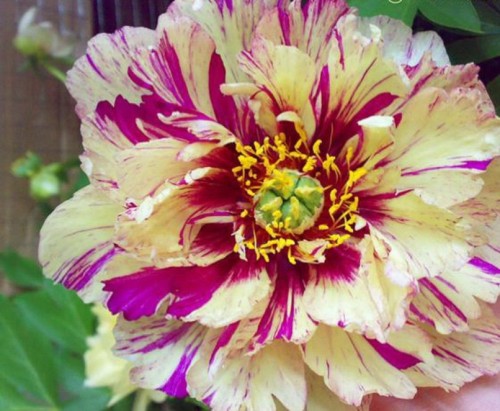
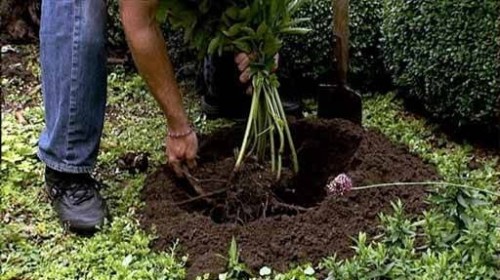
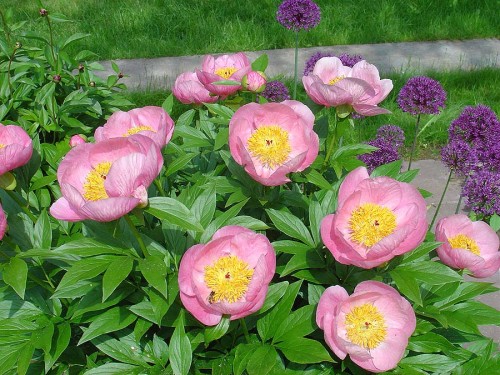
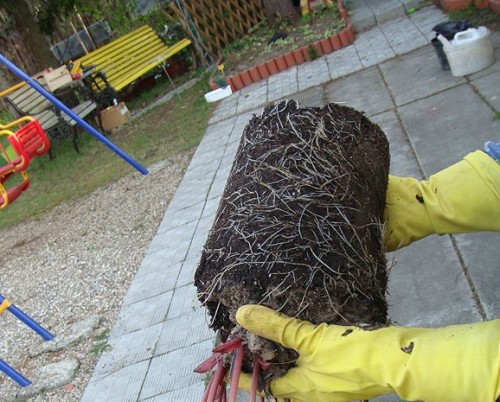
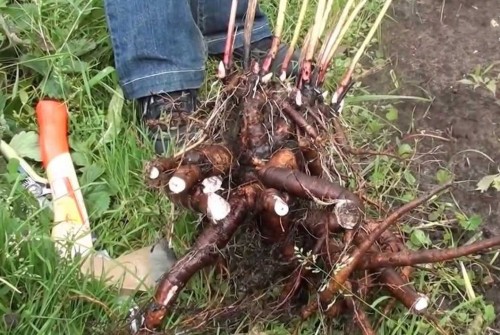
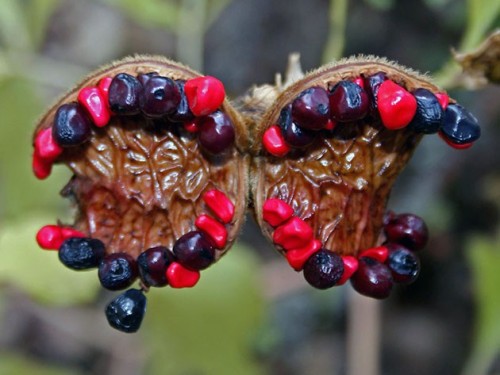
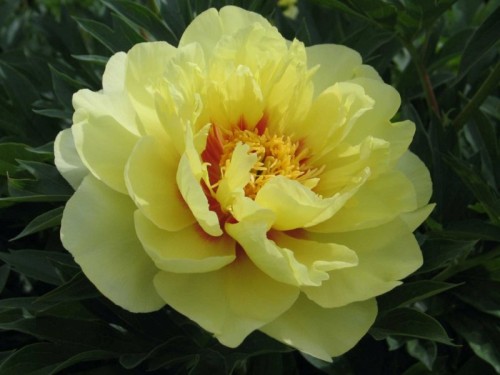
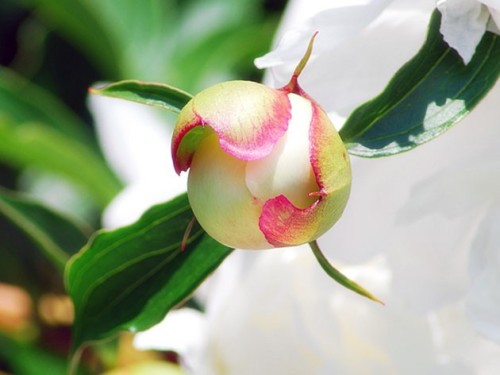
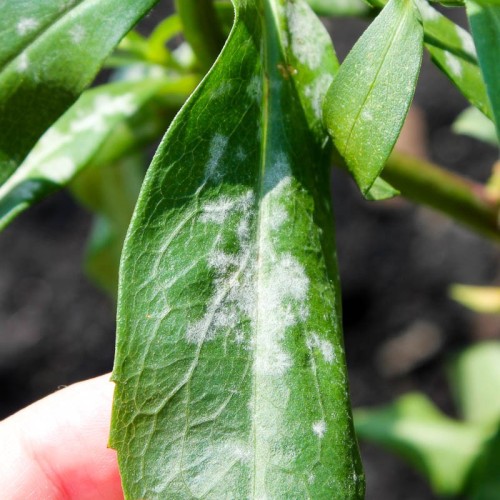












 Start a discussion ...
Start a discussion ...